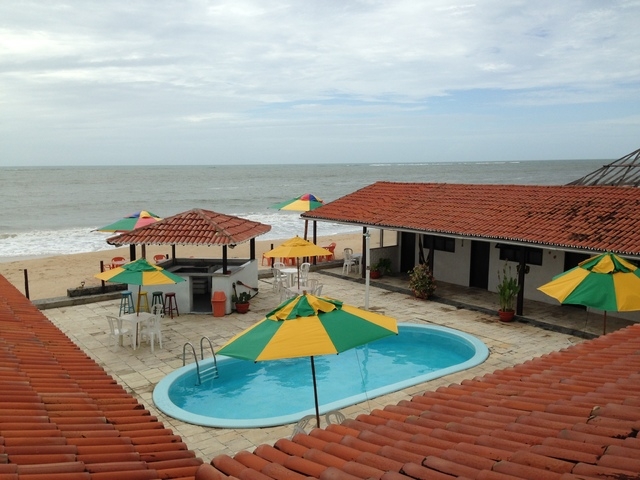Postcard from Brazil: Discovering the history — and beaches — of Natal
Natal is the capital city of the state of Rio Grande do Norte, and is a clean, bright and rather bland city that has swelled as a hub for coastal package tourism. Its population is around a million, and its main attractions are touristic beaches, buggy rides and excursions, restaurants and nightlife.
An early Portuguese attempt to settle the Natal area in 1535 failed due to the hostility of the indigenous Potiguar people and French brazilwood traders. The Portuguese didn’t return until Christmas Day 1597, when a fleet arrived at the mouth of the Rio Potengi with orders to build a fort to keep the French and Potiguars at bay (hence the name Natal, which is Portuguese for Christmas).
During WWII its strategic location close to Brazil’s northeastern tip prompted Presidents Getulio Vargas and Franklin D Roosevelt to turn the sleepy city into a supply base for Allied operations in North Africa. Thousands of U.S. military were stationed here and the city became known as the “Trampoline to Victory.” These days, it’s marketed as the Cidade do Sol (Sun City), with good reason.
Natal is the result of the efforts of Portuguese colonizers against French pirates and Indigenous people from the region. The name of the city — which between 1633 and 1654 was called New Amsterdam by the Dutch invaders - has two origins: one refers to when the Portuguese fleet first arrived at the Potengi River, on the 25th of December 1597; the other refers to the outline of the city’s primitive place, made by Jeronimo de Albuquerque on the 25th of December1599.
The fact that it is close to Europe and Africa, makes Natal one of the most convenient ways in for tourists from these areas. With a little over 800 thousand inhabitants and a Human Development Index (HDI) of 0.788, the city is in Brazil’s extreme northeast and attracts tourists as a result of the beauty of its beaches and dunes, average temperature of 28 degrees Celsius (82 degrees Fahrenheit) and historical sites dating back to the 16th century.
In 2010, Natal had over 2 million visitors, number that could reach 3 million in the year of the World Cup. In order to adapt to the increase of tourist flow, the government and the private initiative intend on investing on improving the roadway system, increasing the size of the airport and the number of hotels, to around 26 thousand rooms.
The coastline of the state of Rio Grande do Norte is one of the most famous and sought after by Brazilians and an ever increasing number of foreign tourists. The state is right at the top of Brazil and offers breathtaking landscape and views to its visitors, bathed by clear and warm water, where during the low tide period, one may relax in a natural pool in the sea.
The state’s coastline extends over a length of more than 400 km (250 miles). The state capital Natal is known for its natural beauty, beautiful beaches, dunes and rich culture.
Brennan Karle is a Las Vegas teacher who covers prep sports for the Review-Journal. He’s in Brazil for the World Cup and will be sharing electronic postcards on his experiences. You can see photos of his trip on Instagram at brennankarle.

















